 System Tutorial
System Tutorial
 Windows Series
Windows Series
 Where is the Win11 printer task list? Tips for viewing print tasks in Win11
Where is the Win11 printer task list? Tips for viewing print tasks in Win11
Where is the Win11 printer task list? Tips for viewing print tasks in Win11
Recently, the Win11 system was officially released, and the much-anticipated new version of the operating system has excited many users. The most eye-catching one is the new "Printer Task List" function added to the system. This brand-new function integrates multiple convenient printing task operations, which can greatly improve users' office efficiency. So, PHP editor Xiaoxin will share with you how to view the Win11 printer task list and how to use the tips in the printer task list to make your printing work easier and more convenient. First, open the "Settings" window in the Win11 system, click the "Device" option, enter the printer-related settings page, and view the list of connected printers in the system. In the list, find the target printer and click the "Manage" link on the right to open the printer task list and view all current tasks. The status, file name, page number, printer name and other information of each task will be displayed in the list. Users can manage and control tasks through the list. The printer task list provides a number of practical operations. Users can use the list to perform operations such as pausing, continuing, and canceling the printer. They can also view task properties, adjust printer settings, etc. These operations can be completed with simple mouse clicks, saving users the time and energy to perform tedious operations in the printer control panel, greatly improving work efficiency. In addition, the printer task list also provides some advanced functions, such as grouping, automatic retry, etc. Users can group printing tasks according to different rules to facilitate task management and search. When an error occurs in a printing task, the system will automatically retry, improving the printing success rate. These automated functions will undoubtedly

Windows 11 View printing task list
1. First, press the [Win R] key combination on the keyboard to open Run, then enter the [printmanagement.msc] command and press [OK or Enter];
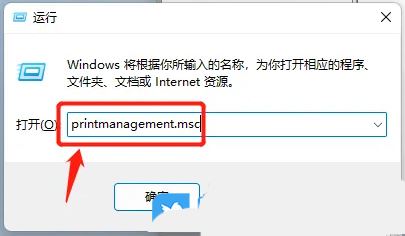
2. In the print management window, click on the left to expand [Customize Filter], then click [Printer Contains Jobs];
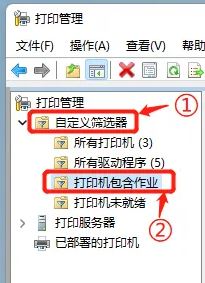
3. In the right column, you can see all the tasks currently being printed;
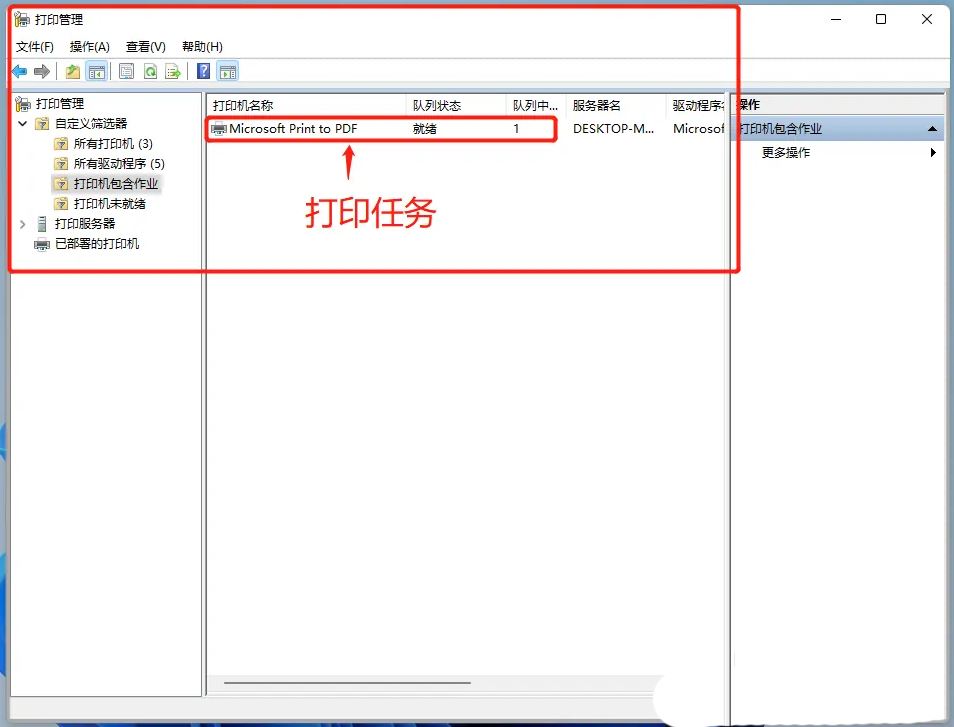
4. In addition, in the right column of [Customized Filters] → [All Printers], you can also see a list of all printers on this machine;
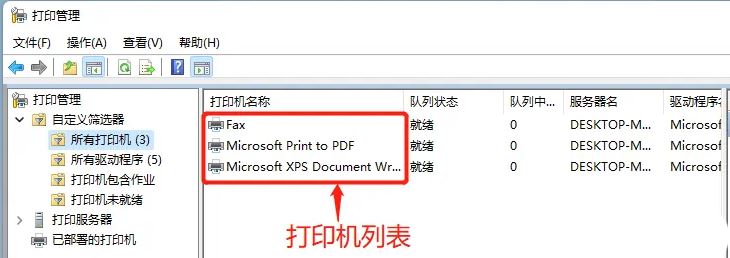
Introduction to Print Management in Windows 11
The Print Management interface provides a hierarchical view of local print servers and network print servers (if there are existing connections). For each print server, you can access information about print drivers, forms, ports, and printers. You can also perform multiple tasks specific to each category. For example, you can uninstall a printer driver, add a print form, delete a port, or configure printer settings. For example, a printer named Canon MF260 is selected in the main window. If you right-click on the printer, a context menu appears that provides several options for working with the printer (Figure 2).
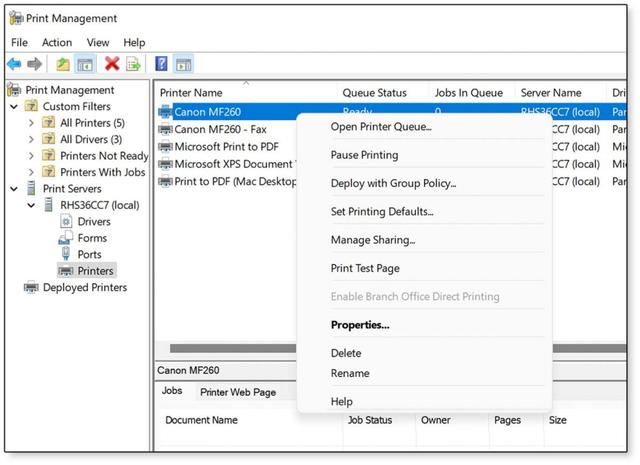
For example, you can open a printer queue, pause printing, set printing defaults, print a test page, or share the printer. If the computer is connected to a domain, you can also delete the printer, rename it, or deploy it using Group Policy.
You can access a printer's properties through the context menu, or by double-clicking on the printer. From the Properties dialog box, you can view additional information about the printer and perform various other tasks. For example, the General tab allows you to change the printer's name, add a location or note, and view information about the printer's capabilities (Figure 3).
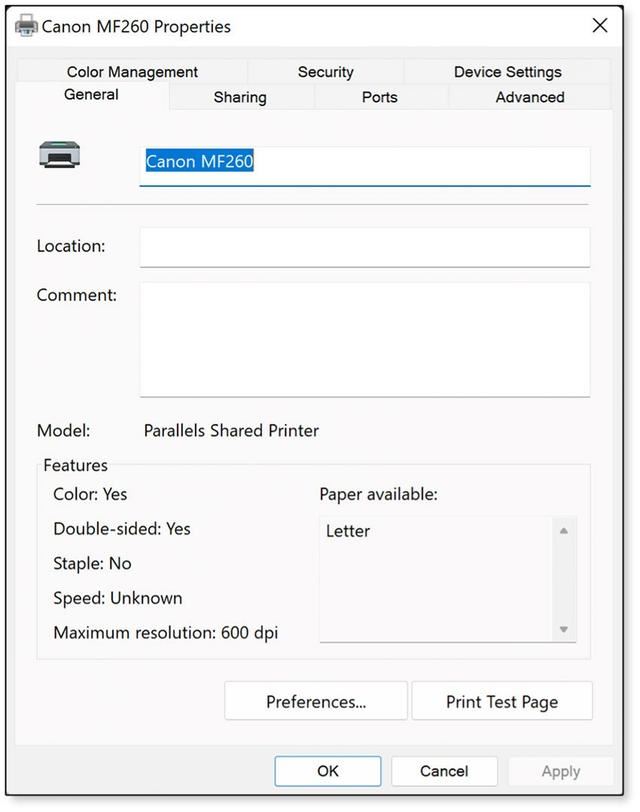
You can also print a test page or access printing preferences.
The General tab is just one of several tabs in the Properties dialog box, most of which are self-explanatory. For example, you can use the Security tab to manage permissions for a printer, the Sharing tab to share a printer, and the Device Settings tab to configure printer settings.
Additionally, you can use the Advanced tab to configure availability, spooling, and other settings (Figure 4). In the Advanced tab, you can also set printing defaults, select a print processor, and specify separator pages.
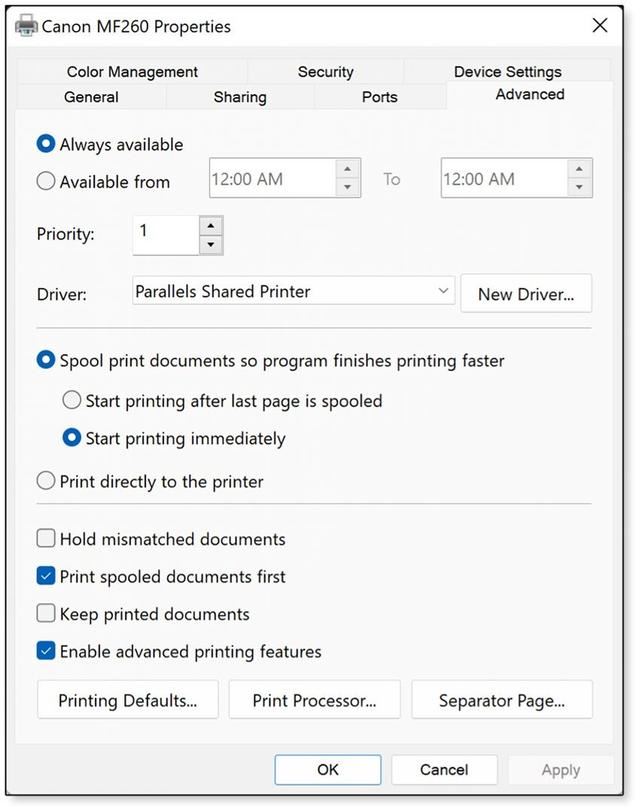
Print management in Windows 11 also allows you to perform tasks at the server level such as adding printers, exporting printers to files, importing printers from files, setting notifications, and more Task. In addition, you can access the server's properties and configure security at the server level, specify the spool folder, and perform other operations.
You can perform many other printer-related tasks in print management, and there are usually multiple ways to access different features. The best way to learn about print management is to open it and start exploring the utility. You'll find the interface easy to navigate and easy to understand. It provides a valuable tool for print management in Windows 11.
What to do if you can’t access Print Management
Once you figure out how to start Print Management, you should be able to use the tool without any issues. However, you may encounter situations where you are unable to access or find the Print Management snap-in. For example, when you try to launch it from the Run command window, Windows 11 may return an error with the following message: "Windows cannot find 'printmanagement.msc'. Make sure you enter the name correctly and try again."
Typically, the reason Print Management is unavailable is that it has not been installed on the local Windows 11 computer. In fact, it is considered an optional feature in Windows 11 and usually needs to be added to the system manually. It only works with Windows 11 Pro and Enterprise editions, not Home editions.
To add print management, open the Settings app, click Apps, click Optional Features, and then click View Features. In the search box, start typing print management. Once you find the application, click the associated checkbox, and then click Next (Figure 5).
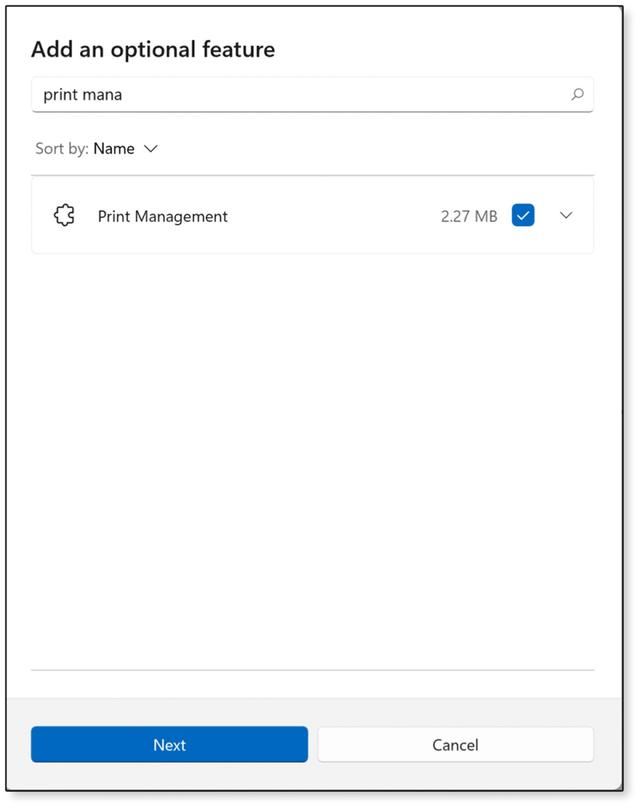
After clicking Next, a second screen will appear to verify the installation. On the second screen, click Install. This will return you to the Optional Features screen, where you can confirm that Print Management—boxed in red (Figure 6)—was recently installed. You can also confirm if it's listed as an installed feature - also boxed in red. You can then close the Settings app and launch Print Management as normal.
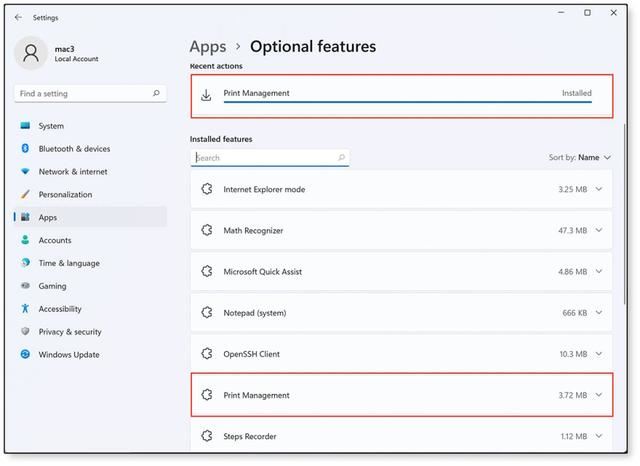
In some cases, you may have problems trying to start Print Management even though it appears to be installed. Before performing any other steps, you should confirm that the printmanagement.msc file is listed in the %windir%\Windows\system32 folder. If not, then you should try installing again. If so, there may be a problem with your print management installation, possibly caused by updates, new drivers, malware, or other causes.
If you think there is an issue with your Print Management installation, open the Settings app and go to the Optional Features screen. Expand the Print Management list - framed in red (Figure 7). Then, click Uninstall. Once completed, try reinstalling Print Management following the previous instructions.
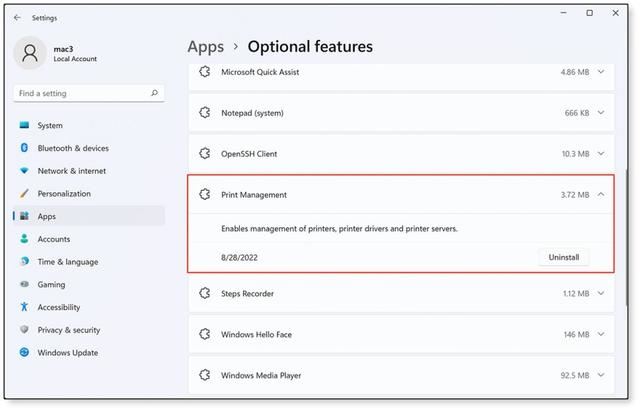
If you still cannot access Print Management, you can try using the Windows Deployment Image Servicing and Management (DISM) utility to verify that Print Management is installed, or remove the app program or add it back. Because DISM is a command-line utility, you can run it in a Command Prompt window, but you must start Command Prompt as an administrator.
To check whether Print Management is installed, run the following command at the command prompt:
dism /Online /get-capabilityinfo /capabilityname:Print.Management.Console~~ ~~0.0.1.0
If Print Management is installed, the "Status" attribute will show "Installed". If you think there is a problem with Print Management and want to uninstall it, you can run the following command:
dism /Online /Remove-Capability /CapabilityName:Print.Management.Console~~~~0.0.1.0
To install or reinstall Print Management, run the following command:
dism /Online /add-Capability /CapabilityName:Print.Management.Console~~~~0.0 .1.0
If you still can't access print management after trying all of these options, you may need to take additional steps, such as restarting the printer spooler service, cleaning the spool folder - for example running %windir% \Windows\system32\ spool\PRINTERS - Run a System File Checker scan to fix corrupted files, or completely reset Windows.
The above is the detailed content of Where is the Win11 printer task list? Tips for viewing print tasks in Win11. For more information, please follow other related articles on the PHP Chinese website!

Hot AI Tools

Undresser.AI Undress
AI-powered app for creating realistic nude photos

AI Clothes Remover
Online AI tool for removing clothes from photos.

Undress AI Tool
Undress images for free

Clothoff.io
AI clothes remover

Video Face Swap
Swap faces in any video effortlessly with our completely free AI face swap tool!

Hot Article

Hot Tools

Notepad++7.3.1
Easy-to-use and free code editor

SublimeText3 Chinese version
Chinese version, very easy to use

Zend Studio 13.0.1
Powerful PHP integrated development environment

Dreamweaver CS6
Visual web development tools

SublimeText3 Mac version
God-level code editing software (SublimeText3)

Hot Topics
 1670
1670
 14
14
 1428
1428
 52
52
 1329
1329
 25
25
 1273
1273
 29
29
 1256
1256
 24
24
 What should I do if the win11 dual-screen calendar does not exist on the second monitor?
Jun 12, 2024 pm 05:47 PM
What should I do if the win11 dual-screen calendar does not exist on the second monitor?
Jun 12, 2024 pm 05:47 PM
An important tool for organizing your daily work and routine in Windows 11 is the display of time and date in the taskbar. This feature is usually located in the lower right corner of the screen and gives you instant access to the time and date. By clicking this area, you can bring up your calendar, making it easier to check upcoming appointments and dates without having to open a separate app. However, if you use multiple monitors, you may run into issues with this feature. Specifically, while the clock and date appear on the taskbar on all connected monitors, the ability to click the date and time on a second monitor to display the calendar is unavailable. As of now, this feature only works on the main display - it's unlike Windows 10, where clicking on any
 Win11 24H2 will adjust security rules and NAS user access may fail
Jun 25, 2024 pm 05:23 PM
Win11 24H2 will adjust security rules and NAS user access may fail
Jun 25, 2024 pm 05:23 PM
Digital enthusiasts all know that Microsoft has released a preview version of Windows 1124H2, and the official version of Windows 1124H2 will be coming soon. This is a very important version update, and many friends are paying close attention to it. Of course, the most noteworthy thing about Windows 1124H2 is the new features and improvements in AI. It is said that Microsoft will deeply integrate Copliot. However, AI is not the subject of this article. The subject of this article is to introduce readers to two new security rule changes in the Windows 1124H2 version, which may affect some NAS users. Specifically, in the Windows 1124H2 version, Microsoft will make changes to two important network access rules:
 Is Win11 LTSC not suitable for individual users at all? Analysis of the advantages and disadvantages of the LTSC version
Jun 25, 2024 pm 10:35 PM
Is Win11 LTSC not suitable for individual users at all? Analysis of the advantages and disadvantages of the LTSC version
Jun 25, 2024 pm 10:35 PM
Microsoft provides multiple versions of Windows systems, each targeting different usage scenarios. In addition to the Home, Professional, Education and Enterprise editions, there is also a special LTSC edition designed for the specific needs of large businesses and organizations. Although Windows 11 LTSC has become quite popular recently, it lacks commonly used functions and is not suitable for individual users. And this version has not yet been officially launched, and is expected to be released around September in the second half of 2024. Interesting thing: From Windows 1.0 to 11, the evolution of Windows versions. What is Windows 11 LTSC? Windows11LTSC is a feature of Windows11 operating system
 Is win11 24h2 worth installing? Comparison of the differences between Win11 24H2 and 23H2
Jun 11, 2024 pm 03:17 PM
Is win11 24h2 worth installing? Comparison of the differences between Win11 24H2 and 23H2
Jun 11, 2024 pm 03:17 PM
The win1124h2 version is a version that many users are looking forward to. Now that the small update of Win1124H2 has been completed, it will welcome a larger Moment update. However, many users are asking whether win1124h2 is easy to use? What is the difference between Win1124H2 and 23H2? Let this site carefully introduce to users the differences between Win1124H2 and 23H2. What is the difference between Win1124H2 and 23H2? The Windows 1124H2 update brings many adjustments and new features to the Settings application, and accelerates the migration of Control Panel-related functions/features. Improved accessibility Windows 1124H2 includes several accessibility improvements: including color filters
 System Restore prompts that you must enable system protection on this drive
Jun 19, 2024 pm 12:23 PM
System Restore prompts that you must enable system protection on this drive
Jun 19, 2024 pm 12:23 PM
The computer has a restore point, and when the system is restored, it prompts "You must enable system protection on this drive." This usually means that the system protection function is not turned on. System protection is a feature provided by the Windows operating system that can create system restore points to back up system files and settings. That way, if something goes wrong, you can revert to a previous state. When the system fails and you cannot enter the desktop to start it, you can only try the following method: Troubleshooting-Advanced Options-Command Prompt Command 1 netstartvssrstrui.exe/offline:C:\windows=active Command 2 cd%windir%\system32 \configrenSYSTEMsy
 What should I do if my win11 wallpaper is locked and cannot be changed? What to do if my computer wallpaper is locked and cannot be changed?
Jun 09, 2024 pm 08:58 PM
What should I do if my win11 wallpaper is locked and cannot be changed? What to do if my computer wallpaper is locked and cannot be changed?
Jun 09, 2024 pm 08:58 PM
What should I do if my win11 wallpaper is locked and cannot be changed? Users can directly click on this computer, then click on the search box and directly enter %ProgramData%MicrosoftWindows to perform the operation. Now, let this website give users a detailed introduction to the detailed explanation of Win11 wallpaper being locked and unable to be changed. The win11 wallpaper is locked and cannot be changed. Detailed explanation method one: 1. Double-click the mouse to enter [This PC]. 2. After entering, enter a string of codes like [%ProgramData%MicrosoftWindows] in the search box at the top of the page, and then click Enter. 3. Then find [systemdata] in the folder below and click in
 Quick solution to the unresponsiveness of clicking desktop icons in Windows 11
Jun 05, 2024 pm 01:03 PM
Quick solution to the unresponsiveness of clicking desktop icons in Windows 11
Jun 05, 2024 pm 01:03 PM
Nowadays, more and more people are using the win11 system. This system will inevitably have some problems. Recently, many users have encountered the problem of no response when clicking desktop icons in win11. Let’s take a look at the specific solutions! Method 1 1. On the Windows 10 desktop, we right-click the Start button in the lower left corner, and then select the "Run" menu item in the pop-up menu. 2. The Windows 10 run window will open, enter the command regedit in the window, and then click the OK button. 3. The Registry Editor window will open. In the window, we locate Computer\HKEY_CURRENT_USER\Software\Microsoft\Windows\
 How to change the win11 system interface to the classic version? Share how to change the win11 system interface to the classic version
May 09, 2024 pm 02:19 PM
How to change the win11 system interface to the classic version? Share how to change the win11 system interface to the classic version
May 09, 2024 pm 02:19 PM
Win11 has designed a new modern user interface, providing new interactions and appearances. However, many users still prefer the classic version of the desktop, so how should they be changed to the classic version? Let’s take a look below! 1. Adjust the taskbar: - Right-click the taskbar and select Taskbar Settings. -In the taskbar settings, you have the option to change the taskbar position to the bottom and adjust the size of the taskbar icons. - There is also the option to hide the task view button, task view and the new notification center. Also available: Xiaozhi Eye Protector. Quickly beautify the taskbar and experience a different desktop. 2. Adjust the start menu: - Right-click the start button on the taskbar and select Start button settings. -In the start button settings you can choose to set the start menu style to classic which will



